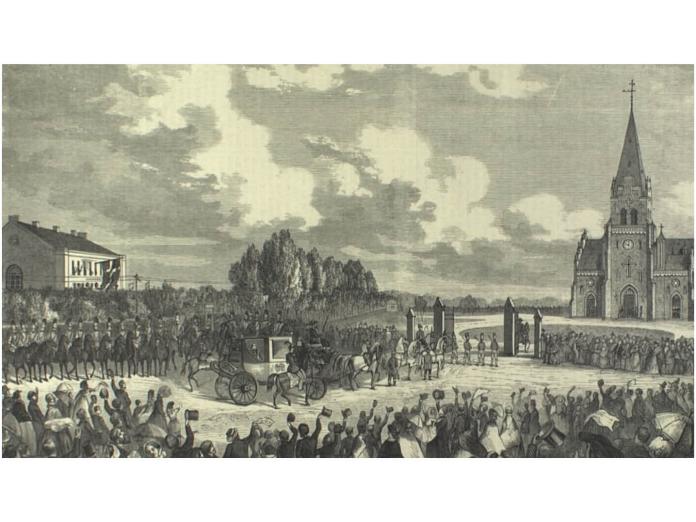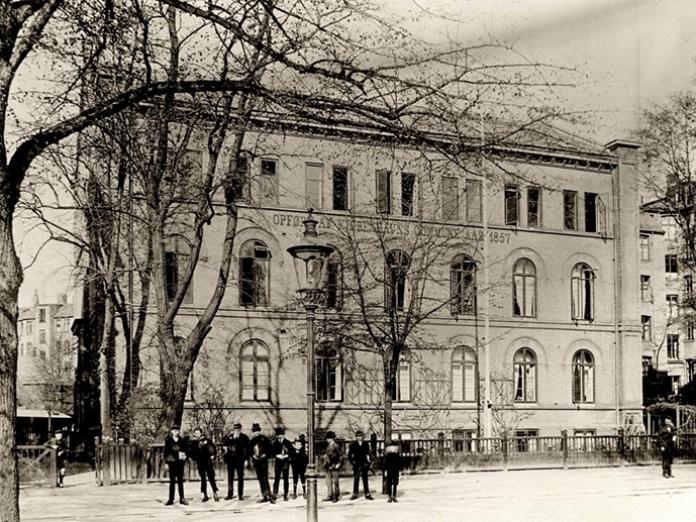Union's history
The building that we know today as Union has had a long and eventful history. Over the years it has been an iconic building and an important part of Nørrebro's history, where it has witnessed a bit of everything.
The school at Nørre Allé
The building at Nørre Allé 7 was built back in 1857 as a school for the children in the burgeoning quarter. Nørre Allé Betalingsskole was one of the first buildings on the old Blegdams Fælled, but was joined a few years later by the beautiful St. John's Church, which has also given its name to St. John's Square (Sankt Hans Torv).
As early as 1862, the school was expanded and got more floors. The man behind the reconstruction was architect Theodor Sørensen, who had also designed the church.
The school was arranged in such a way that the inspector had eight rooms on the ground floor, the school officer four rooms in the basement and the deputy inspector three rooms on the attic.
The name remained Nørre Allé Betalingsskole right up until 1915, when it changed its name to Nørre Allé Skole.

Resistance during WWII
On 19 September 1944, the two resistance fighters Jørgen Haagen Schmith (nickname: 'The Lemon') and Helmer Bomhoff, disguised as Danish police, were arrested by the Germans and taken into the school yard at Nørre Allé Skole.
Helmer Bomhoff managed to escape, while 'Citronen', who tried to escape over a wooden fence, was shot through the lung.
Severely injured, he was placed in an ambulance. Along the way, he managed to shoot the Schalburg man who was in the ambulance, and escaped after treatment at Frederiksberg Hospital.
A month later, however, his luck ran out: After a long firefight, The Lemon was shot and killed by the Germans in a villa in Gentofte.
From school to cultural center
Nørre Allé School lived on for many years until it was closed down in 1987. In 1993, the building at Nørre Allé 7 was converted into a cultural center under the name Nørre Allé Medborgerhus.
In 2006, the name was changed to VerdensKulturCentret, and in March 2019 the building changed its name again to the current one, Union.
Although much has been remodelled to accommodate the eclectic cultural program that Union offers, you can still feel the school in the architecture.
And it is also with a slight nod to the past that the large multivenue on the first floor was named Aula.

Sources: Poul-Erik Pløhn / Mit Nørrebro